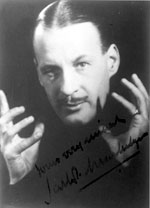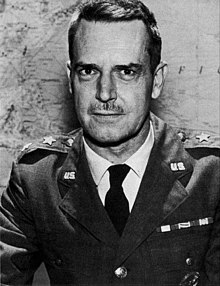My
interest in the UFO phenomenon evolved over the years to include an
interest in the intelligence community, or IC. This should be quite
understandable, as those even mildly familiar with the UFO scene
should be well aware you can't toss a dead rat in the
American UFO community without hitting a spook.
 |
| He shouted out, "Who killed the Kennedys?!" |
My
expanding networking circles and selected reading materials naturally
came to include increasing numbers of researchers and authors with
interests in the Cold War, its conspiracies and their historical
significance. In the process, I came to understand more about
psychological warfare and the IC. I learned about
circumstances such as a 1949 USAF Project Grudge report that noted, "Planned
release of unusual aerial objects coupled with the release of related
psychological propaganda could cause mass hysteria."
Indeed
it could. I confidently suspect it has.
I
learned something called electronic countermeasures were used to
create false radar paints. According to a report composed by CIA man Gene Poteat, Project PALLADIUM was jointly
conducted during the mid 20th century by the NSA, CIA and DoD, and phantom aircraft of any size
desired could be made to appear to travel on any flight path at any
speed and altitude. In at least some circumstances the false paints
were coordinated with the release of
what Poteat described as "balloon-borne
metalized spheres of different sizes."
I
read transcripts of Congressional hearings and books by
writer/researchers such as John Marks that clearly confirmed the
exploitation of involuntary human research subjects. The bizarre and
extreme nature of experiments conducted within operations such as
ARTICHOKE, BLUEBIRD and MKULTRA were of such questionable conditions
that the mental health of the project personnel themselves would be
called into question.
One CIA officer, Marks reported, after reading a project memo, wrote
to his boss, "If this is supposed to be covered up as a defensive
feasibility study, it's pretty damn transparent." Circumstances
portrayed in now declassified documents bear striking similarities to
those reported by select self-described alien abductees.
As
I became more familiar with researchers and genres outside the UFO
community, I learned something I think is important yet widely eludes
the average UFO enthusiast: Researchers within genres that overlap
with ufology, such as the Cold War and conspiracies of historical significance, tend to hold
much more complete and accurate perspectives of the IC – and its
specific players – than do their ufology counterparts. People who
research and write about Cold War secrets often demonstrate thorough understandings of complex dynamics involving members of the IC who played
roles in ufology. Such researchers tend to understand the potential relevance of such circumstances more than seems to be the case among members of the UFO community.
UFO-researchers often appear to suffer from a tunnel vision type of bias; they tend to view everything in the context of possible alien visitation. Perhaps in some instances it is due to sincere lack of abilities to think critically and consider broad ranges of possibilities, while in other cases it appears intentional and disingenuous suppression of certain material and circumstances is likely. Ufologists (who fail to account for Cold War relevance), if they broach the subject of the IC at all, tend to focus on relatively trivial and often hypothetical circumstances, as compared to forming wider and more practical contexts. Many of them seemingly automatically and prematurely equate the IC activity in ufology with confirmation of an alien presence. Seldom are deeper implications and evolving objectives of intelligence agencies from one era to the next taken into account. The UFO community and its researchers rarely consider the overall careers of intelligence officers who moonlight as ufologists, as compared to focusing virtually solely upon their UFO-related activities. All of that is the case in spite of the wide availability of factual material that could provide deeper insight. To ignore such material is detrimental to accurate reporting and counterproductive to identifying truth.
Investigative journalist Annie Jacobsen hit the proverbial ball over the fence with Operation Paperclip: The Secret Intelligence Program that Brought Nazi Scientists to America. The author provided a thorough accounting of intriguing circumstances, some of which were never before released, surrounding the end of World War II and its spy games. The book is a fine work that should appeal to many genres. UFO-researchers would be well advised to take note of the professional research skills demonstrated by its author.
The UFO community might also be wise to consider the manners intelligence officials practice deception, and in what capacities. In the case of Operation Paperclip, parameters were initially set dictating the circumstances of which German scientists could be recruited, yet were systematically expanded. In Orwellian-like fashion of pigs revising and whitewashing community rules painted on the barn wall, US officials repeatedly reworded the parameters to eventually allow recruitment of basically anybody, including known Nazi war criminals. The US government intentionally hid the circumstances while offering asylum and employment to German officers. Such officers included men who had been responsible for the design and implementation of slave labor camps and agonizingly cruel experiments conducted on human research subjects resulting in inconceivable numbers of deaths.
During the Nuremberg trials, some of the very rare survivors provided testimony. One man, a former prisoner at a concentration camp, attempted to stab his abuser during the hearings. He attacked the Nazi for what was described as surgically removing part of his liver without the use of anesthesia.
Another young Polish woman and a medical doctor testified how, while she was held at a concentration camp, her shins were intentionally broken and infected with gangrene, apparently in order to study the circumstances. Her abuser went on to be employed in America for a time.
Such experiments included studies of dehydration/dying of thirst, freezing to death and effects of altitude and air pressure. The vast majority of research subjects died in the process, sometimes while being intermittently photographed doing so.
The men recruited during Paperclip numbered over 1,000 and many went on to hold key positions in American corporations and intelligence operations. Some became high profile public figures who were falsely portrayed to be good world citizens oppressed by the Nazi rise to power. Their work included significant aspects of the American space program, and they were among the original architects of CIA behavior modification/mind control ventures. We might be wise to look into that more deeply, or at least consider its potential relevance, from time to time.
UFO-researchers often appear to suffer from a tunnel vision type of bias; they tend to view everything in the context of possible alien visitation. Perhaps in some instances it is due to sincere lack of abilities to think critically and consider broad ranges of possibilities, while in other cases it appears intentional and disingenuous suppression of certain material and circumstances is likely. Ufologists (who fail to account for Cold War relevance), if they broach the subject of the IC at all, tend to focus on relatively trivial and often hypothetical circumstances, as compared to forming wider and more practical contexts. Many of them seemingly automatically and prematurely equate the IC activity in ufology with confirmation of an alien presence. Seldom are deeper implications and evolving objectives of intelligence agencies from one era to the next taken into account. The UFO community and its researchers rarely consider the overall careers of intelligence officers who moonlight as ufologists, as compared to focusing virtually solely upon their UFO-related activities. All of that is the case in spite of the wide availability of factual material that could provide deeper insight. To ignore such material is detrimental to accurate reporting and counterproductive to identifying truth.
Investigative journalist Annie Jacobsen hit the proverbial ball over the fence with Operation Paperclip: The Secret Intelligence Program that Brought Nazi Scientists to America. The author provided a thorough accounting of intriguing circumstances, some of which were never before released, surrounding the end of World War II and its spy games. The book is a fine work that should appeal to many genres. UFO-researchers would be well advised to take note of the professional research skills demonstrated by its author.
The UFO community might also be wise to consider the manners intelligence officials practice deception, and in what capacities. In the case of Operation Paperclip, parameters were initially set dictating the circumstances of which German scientists could be recruited, yet were systematically expanded. In Orwellian-like fashion of pigs revising and whitewashing community rules painted on the barn wall, US officials repeatedly reworded the parameters to eventually allow recruitment of basically anybody, including known Nazi war criminals. The US government intentionally hid the circumstances while offering asylum and employment to German officers. Such officers included men who had been responsible for the design and implementation of slave labor camps and agonizingly cruel experiments conducted on human research subjects resulting in inconceivable numbers of deaths.
During the Nuremberg trials, some of the very rare survivors provided testimony. One man, a former prisoner at a concentration camp, attempted to stab his abuser during the hearings. He attacked the Nazi for what was described as surgically removing part of his liver without the use of anesthesia.
Another young Polish woman and a medical doctor testified how, while she was held at a concentration camp, her shins were intentionally broken and infected with gangrene, apparently in order to study the circumstances. Her abuser went on to be employed in America for a time.
Such experiments included studies of dehydration/dying of thirst, freezing to death and effects of altitude and air pressure. The vast majority of research subjects died in the process, sometimes while being intermittently photographed doing so.
The men recruited during Paperclip numbered over 1,000 and many went on to hold key positions in American corporations and intelligence operations. Some became high profile public figures who were falsely portrayed to be good world citizens oppressed by the Nazi rise to power. Their work included significant aspects of the American space program, and they were among the original architects of CIA behavior modification/mind control ventures. We might be wise to look into that more deeply, or at least consider its potential relevance, from time to time.
I was recently alerted to an interesting item by Lisa Pease via Twitter. Pease is a conspiracy-researcher with a competent working knowledge of the
IC. An expert on the 1960's
assassinations, and particularly the murder of Robert Kennedy, she co-edited The Assassinations: Probe Magazine on JFK, MLK, RFK and Malcolm X,
a 2003 book containing several of her published articles. Pease was recently interviewed on Black Op Radio and is currently in the process of composing a second book. A sample of her written work may be
viewed in her 2011 Salon
piece, The other Kennedy conspiracy. It contains some potentially quite relevant aspects of hypnosis, among other points of interest.
Pease tweeted a link to a 1989 edition of the Journal of the American Folklore Society.
It contained a report authored by Lydia M. Fish, who explored the
activities of General Edward G. Lansdale. The general served in
Southeast Asia and was described by former Director of Central
Intelligence William Colby as one of the ten greatest spies of all
time.
While the IC-related items mentioned above should indeed be of interest
to the UFO community, they are but a small sample of the many, many
circumstances of which researchers of Fortean phenomena might be wise to
take into account before promoting and rushing to fantastic assumptions. En route to considering Lansdale's trickery, let us briefly review the exploits of British
professional magician turned intelligence officer Jasper Maskelyne.
 |
| Jasper Maskelyne |
General
Lansdale was apparently a quick study of such psychological warfare
techniques. Lydia M. Fish reported the following circumstances which
occurred during the 1950's:
He made good use of these techniques, and of his knowledge of Filipino superstitions, in one of his most famous exploits. The Filipino army had not been able to evict a squadron of Huks from the area of a garrison town. A combat psychological warfare squad was brought in and, under Lansdale's direction, planted stories among town residents of an asuang or vampire living on the hill where the Huks were based. A famous local soothsayer, they said, had predicted that men with evil in their hearts would become its victim. After giving the stories time to circulate, the squad set up an ambush on a trail used by the Huks and, when a patrol came by, snatched the last man. They punctured his neck with two holes, held the body upside down until it was drained of blood, and put it back on the trail. The next day the entire Huk squadron moved out of the area (Lansdale 1960:6-7).
 |
| USAF Gen. Edward G. Lansdale |
Lansdale's
operations also included the use of soothsayers for propaganda purposes in Vietnam during the 1960's. He oversaw
the printing and distribution of literature containing predictions of a dark future for
Communists as supposedly foreseen by the most famous astrologers.
Several soothsayers were willing to cooperate – and Lansdale didn't
stop there.
"It
is suggested that the U.S. Mission compile a list of the personal
soothsayers and astrologers who service leading Vietnamese
personalities, particularly those who will be candidates in the
forthcoming Presidential campaign," Lansdale wrote in 1967 to
Ambassador Ellsworth Bunker. "These soothsayers have a decided
influence on the activities of many of the Vietnamese leaders, and
their guidance may not always coincide with U.S. objectives. In
turn, most soothsayers are vulnerable to certain influences, also.
"Perhaps such a project is already being carried out, unknown to me. If so, I can think of some folks such as [Vietnamese] General Loan who deserve a bit of influencing."
Jeff Ritzmann of Paranormal Waypoint published a blog post last year in which he addressed the likelihood U-2 spy planes related to Area 51 accounted for a surge in inexplicable aerial phenomena and as reported in the news. Ritzmann pointed out that specific missions and flight patterns could potentially be correlated with UFO reports. Doing so, he explained, might possibly reveal data and situations of interest if anyone had the inclination to conduct the research, and particularly as opposed to investing large amounts of time and energy in arguing hypothetical circumstances.
I have often thought similar about Project PALLADIUM. If we know false radar paints were created, and were in some circumstances accompanied by the release of unusual aerial objects, it would seem we might take an interest in clarifying when, where and similar details that might be declassified. Such research might be considered comparable to a most practical list of known satellite re-entries as maintained by Ted Molczan and recently explored by Robert Sheaffer.
"Perhaps such a project is already being carried out, unknown to me. If so, I can think of some folks such as [Vietnamese] General Loan who deserve a bit of influencing."
Jeff Ritzmann of Paranormal Waypoint published a blog post last year in which he addressed the likelihood U-2 spy planes related to Area 51 accounted for a surge in inexplicable aerial phenomena and as reported in the news. Ritzmann pointed out that specific missions and flight patterns could potentially be correlated with UFO reports. Doing so, he explained, might possibly reveal data and situations of interest if anyone had the inclination to conduct the research, and particularly as opposed to investing large amounts of time and energy in arguing hypothetical circumstances.
I have often thought similar about Project PALLADIUM. If we know false radar paints were created, and were in some circumstances accompanied by the release of unusual aerial objects, it would seem we might take an interest in clarifying when, where and similar details that might be declassified. Such research might be considered comparable to a most practical list of known satellite re-entries as maintained by Ted Molczan and recently explored by Robert Sheaffer.
UFO-researchers would be well served to occasionally take a step back from what seems to so often become the all engrossing world of UFOs and high strangeness, and look for a bit more context. That might particularly be the case when reviewing events that so frequently include the activities and interests of members of the intelligence community, a demographic skilled in deception. UFO enthusiasts, if sincere, could learn valuable lessons, important skills and relevant information from professional researchers in related genres which overlap with ufology.
.jpg)


Jack, what a thoroughly well thought-out piece. One wonders how many 1950s (and more recent) UFO reports were a product of PALLADIUM technology....
ReplyDeleteThanks, Bill! I very much appreciate your comments.
DeleteYes, we might wonder a lot about how much the IC stirred the pot. Maybe intentionally, maybe sometimes just a byproduct of more complex circumstances.
Some readers may be unaware that Pilkington addressed PALLADIUM and similar circumstances in his book, 'Mirage Men'. Apparently as late as the 1980's, such operations were still considered potentially practical and useful - which brings me back to Jacobsen and 'Paperclip' for a moment, please.
I appreciated that Jacobsen addressed the declassification process and the manners it is largely misunderstood by the public at large. For instance, just because something may have happened many years ago or would be considered for declassification if someone asked, does not necessarily mean it is currently available.
I very much agree, Bill. Lots of potential directions one could go. Thanks for your interest!
Always welcome, Jack. Regarding declassified documents...some have been released (like a few in outed CIA asset Valerie Plame Wilson's case) and then RE-classified. Wilson's book was published with many lines actually redacted after numerous passes through her former employers. Good point about older material not necessarily being available...some of this--if declassified--might put a few well-known "institutions" in legal hot water.
ReplyDelete